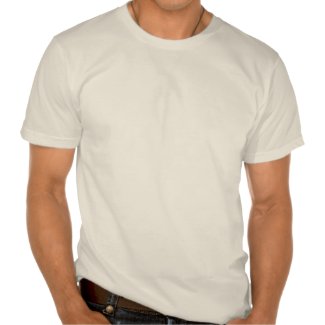 When I was a kid I was terrified of Dracula. The widow's peak, the medallion, the cape, the way he pronounced "good evenink--" the whole bag was scary to me. This Dracula came to me via pop-culture through cartoons, breakfast cereal and after-school tv shows. This wasn't so much Dracula as Grandpa Munster. And yet, this version of Dracula was a caricature of the one created by Bela Legosi in the 1931 film. And here's the wacky thing. I'm not scared of the REAL Dracula at all.
When I was a kid I was terrified of Dracula. The widow's peak, the medallion, the cape, the way he pronounced "good evenink--" the whole bag was scary to me. This Dracula came to me via pop-culture through cartoons, breakfast cereal and after-school tv shows. This wasn't so much Dracula as Grandpa Munster. And yet, this version of Dracula was a caricature of the one created by Bela Legosi in the 1931 film. And here's the wacky thing. I'm not scared of the REAL Dracula at all.Certain cultural icons are sometimes lacking when you discover that the sum of the whole cultural snowball is greater than the grain which started it rolling. Never in the 1931 Dracula does Bela Legosi say "I vant to suck your blood." He doesn't even say "Good evenink," he says "We sail tomorrow evenink." Somehow not as bone-chilling. He only once throws his cape over one of his victims, but it is a quick scene at the beginning meant to show a change of place from Transylvania to London. Indeed, the scariest thing in Dracula is Renfield!
Dwight Frye plays Dracula's hapless slave with an eerie glee and pathos that is truly haunting. His creepiness is heightened by the almost expressionistic way his character is filmed. In the film's scariest scene, a rescue team discovers a boat adrift and all passenger's dead, save one, Renfield who has been locked in the hold with his master's coffin. Director Tod Browning films Renfield from above with his pale mad face poking out from the gloom and the only noise on the soundtrack the man's hideous laugh.
Part of what excited me about re-watching Dracula '31 was seeing David Manners again as Jonathan Harker. That turned out to be the biggest disappointment. In the many adaptations I've seen, Harker comes off as somewhat insipid. He is the protagonist of the novel but most of his heroic deeds involve skillful clerical work. That doesn't exactly make for scintillating cinema, and to make matters worse, in the screenplay all of Harker's trials in Transylvania are transferred to Renfield leaving David Manners with nothing to do but sit on a lot of sofas and fuss about the mysterious interloper who is putting the moves on his chic. He reminds me of a less-funny Nick Townsend with Count Dracula being the scum-of-the-Earth titled aristocracy. I actually prefer Trevor Eve in Dracula '79 who played Harker as an impatient and brash young man. Part of the problem is a lack of chemistry between Manners and Helen Chandler, who plays Mina. Chandler recreates the chaste Victorian etiquette teacher as a free-spirited heiress whose fascination with the European villian is just another episode in presumably long list of head-strong experiments. But the spoiled heiress is a tricky beast for an actress. Do it right and you have Irene Bullock in Her Man Godfrey and do it wrong and you have Barbara Vance, Irene Dunne's forgettable and unpleasant rival in The Awful Truth. Helen's Mina definitely falls into the Vance camp as far as I'm concerned and after about the twentieth instance of refuting Van Helsing's advice, I was ready to give up her immortal soul. She's that annoying.
In the novel Mina represents the Victorian ideal woman, chaste, caring and sacrificial. Dracula's brides represent all the sins of low, worldly women. In the same way that the romance films of the late 20s and early 30s transformed the Vamp from a Victorian harlot to a wanton flapper, Dracula neatly transforms a flapper into a literal monster or at least a near-monster.
Dracula of the novel goes after Mina for revenge but in the movie, he does it more or less for sport. Dracula is a playa. Lugosi just doesn't have the magnetism to pull off this aspect of the character, though I'm sure generations of horror fans will disagree with me. Lugosi's characterization relies purely on his ability to make you believe he is a supernatural being with magical mojo. One of his most believable moments is the one in which Dracula spots a mirror. His reaction is wild and animalistic --completely at odds with his drawing room Count. Lugosi is assisted by clever lighting and make-up, which highlight his deep set eyes and menacing stare. The still I've posted shows the effectiveness of his make-up, I think. His fingernails alone are the stuff of nightmares. Yet on screen, Dracula is too often represented by a hilariously fakey rubber bat, which in one scene is fought off by Manners in a way that is reminiscent of C3po in the mynocks.
Perhaps it is the aggregate weight of the sequels and knock-offs that have immortalized Lugosi
as the ultimate image of a vampire in our culture rather than any one scene in Tod Browning's film.





2 comments:
Lugosi became associated with the role from the earlier stage production, where he ran around the stage, twirling his cape. The high-gain microphones used in late 1930-early 1931 required film actors to remain motionless, which meant that he had to learn how to act with his face, rather than his body. Fortunately, he had Browning to teach him; having worked with Chaney, Tod learned a thing or two about acting in close-up. This was Browning's first sound film and he had trouble transitioning between silent action scenes and static dialogue scenes. Renfield comes off well because Browning understood crazy and disgusting and Renfield's ravings didn't have to be intelligible, so he could move about at will. Browning, however, didn't seem to get the idea of vampire as uncontrollable sexual force, which is why I prefer George Melford's Spanish version, which has the sex angle worked out nicely.
That explains the clunky, static feel of the movie, Steve, thanks. I often find movies of 1930 and even 1931 to have that feeling. Another common problem is overlong pauses between dialog, which may have been technical or a matter of style.
I look forward to seeing the Spanish language version, which I've ordered from Netflix.
Post a Comment